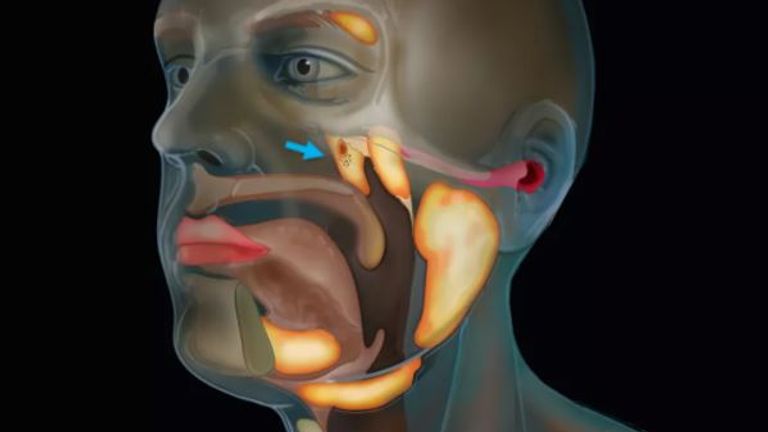The new set of salivary glands lubricate the upper throat behind the nose and mouth.
Wednesday 21 October 2020 09:28, UK

Scientists have discovered a new organ in the throat while carrying out research on prostate cancer.
Previously experts thought there were only microscopic salivary glands inside the nasopharynx region behind the nose.Sponsored link
But researchers at the Netherlands Cancer Institute discovered a new set of salivary glands around 1.5in in length while scanning for prostate cancer cells using using a combination of CT scans and positron emission tomography (PET) scans called PSMA PET-CT.
In PSMA PET-CT scanning, doctors inject a radioactive “tracer” into the patient. This tracer binds well to the protein PSMA, which is elevated in prostate cancer cells.
PSMA PET-CT scanning also happens to be very good at detecting salivary gland tissue, which is also high in PSMA.Advertisement
Writing in the Journal of Radiotherapy and Oncology, the researchers said the newly-found glands are likely to be used to lubricate the upper throat behind the nose and mouth, the scientists added.
They named them the tubarial salivary glands due to their location over a piece of cartilage called the torus tubarius.
To confirm their discovery, the scientists, led by radiation oncologist Wouter Vogel, examined 100 patients and found all of them had the glands.
They also dissected the nasopharynx region of two cadavers and had the same results.
The scientists’ findings could also help reduce the side effects of some cancer treatments, they said.
Doctors using radiotherapy to treat head and neck cancers try to avoid the three main salivary glands because damaging them can leave patients struggling to eat, speak or swallow.
But unaware of the presence of a fourth set of glands, they were still radiating that area, meaning patients were still experiencing side effects.
Dr Vogel said: “Our next step is to find out how we can best spare these new glands and in which patients.
“If we can do this, patients may experience less side effects, which will benefit their overall quality of life after treatment.”